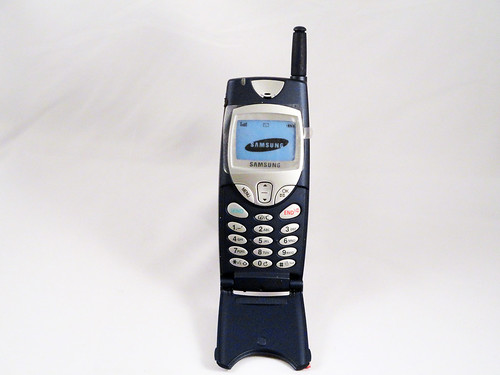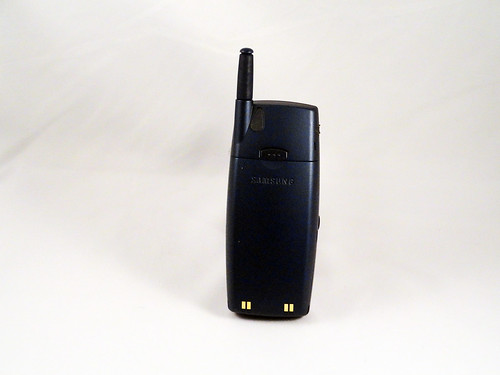After a half-hour searching, I couldn't find the model number of this phone (help appreciated: email me at blog c/o this site). That may be just as well, since what matters is how it's designed to do what it does. In that, it's an interesting example of one of the last generation of mobile phones that we primarily phones, devices that were designed for talking. Not sending pictures, not browsing the net, just calling people and--to a lesser extent--texting. The texting angle is particularly interesting. This phone texts, but it still has a traditional keypad. However, texting had reached "hockey stick" adoption levels at this point (this source says that between January 1999 and December 2001 the number of text messages in the UK went from 100 million messages a month--already a huge amount--to 1.3 billion per month), but phones had not yet adapted to this new way of using them. Blackberry's great advantage was that RIM saw this behavior and began to design devices to exploit it. This device is still largely tuned to talking. It's big and it has that characteristic plastic flap that simultaneously covered the keypad and made the sound quality better. Because, of course, it's about the sound. It sits in the hand well, and the silver buttons are really easy to see against the dark blue background, because it's a phone for dialing people's numbers. It wasn't until the Danger Hiptop exploded, as I remember, in 2003-2004 that others realized that a new way of communicating had taken over.
A phone a day: Anonymous Samsung Phone circa 2000-2001
No TrackBacks
TrackBack URL: http://orangecone.com/cgi-bin/mt/mt-tb.cgi/379





